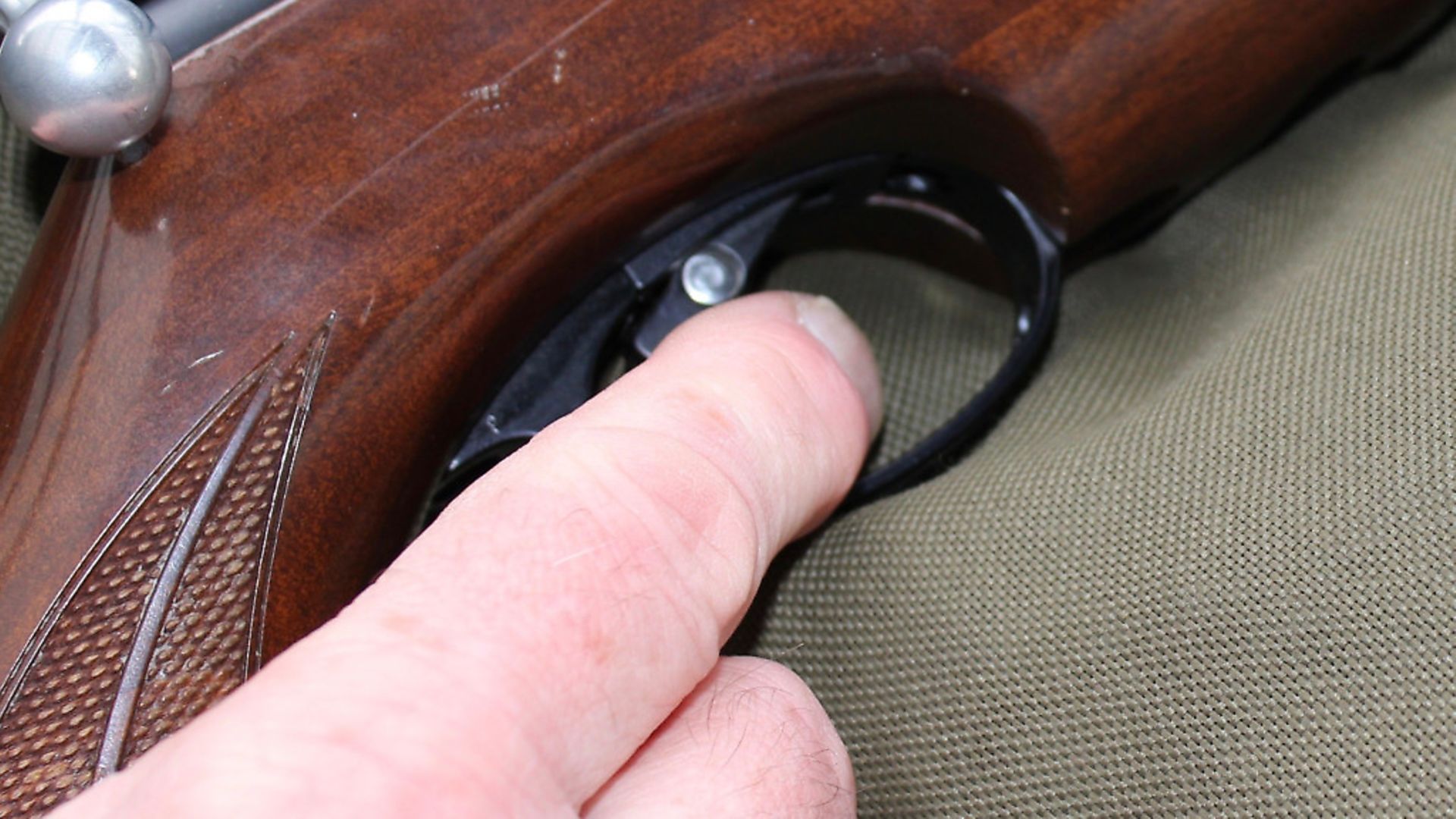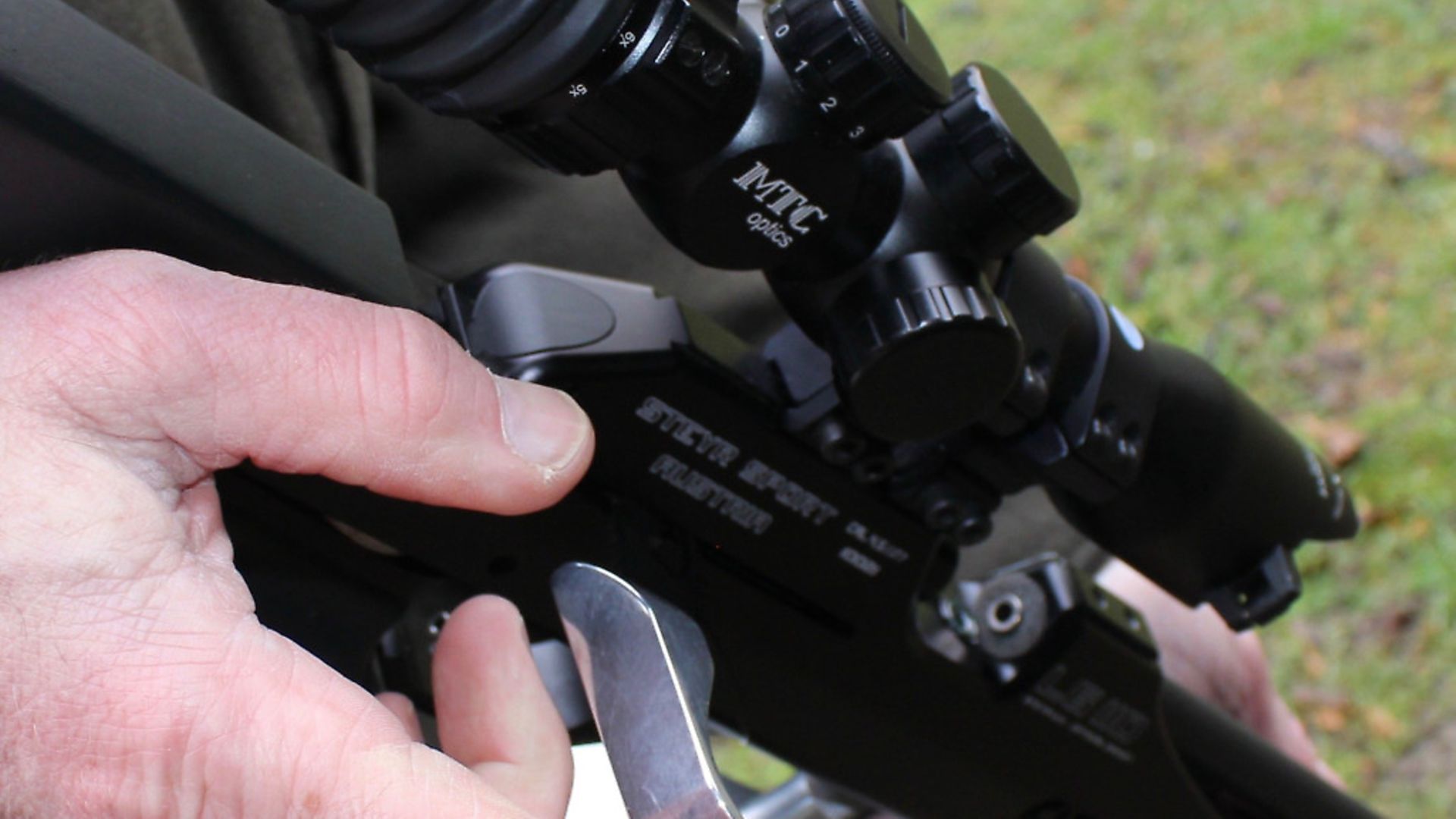There is nothing more basic than airgun safety says Neil Price
 credit: Archant
credit: Archant
Remember that you are always responsible for your air rifle, whether you are shooting it yourself, are allowing someone else to shoot it, or even if it is being used without your permission, if the person concerned acquired it as a result of your negligence. The following points are things that you can practise every time you use an air rifle.
Safe gun handling
1. Never point you airgun at anything that you don’t intend to shoot.
You NEVER point your air rifle at your mates when playing cowboys and indians, EVER.
2. Always treat an airgun as though it were loaded. Develop an awareness of where the barrel is pointing, and ensure that it is always aiming in a safe direction – toward the ground.
Safe gun handling comes from a state of mind in which you have a constant awareness of where the barrel is pointing, without conscious effort. This isn’t something you can achieve simply by reading about it; you have to develop the awareness by keeping it at the forefront of your mind whenever you have the airgun in your possession, until it becomes second nature.
3. Do not load your airgun until you are ready to fire it and are sure that the shot will be safe.
A significant proportion of airgun accidents occur when the person in control of the airgun wrongly believes it to be unloaded, usually after it was loaded in the vague anticipation of a shot that was not taken. If you load your airgun and don’t take the expected shot, discharge it in a safe direction, preferably into the ground a minimum of seven yards in front of you.
4. Never rely on a safety catch to make an airgun ‘safe’.
 credit: Archant
credit: Archant
Safety mechanisms are mechanical devices that can and do fail. The ONLY way to make a loaded airgun safe is to discharge it in a safe direction, such as into the ground.
5. Never put a loaded airgun down.
Always safely discharge your airgun before putting it down to ensure that it cannot be fired.
6. Never leave your airgun unattended.
You can never be sure who might pick it up.
7. On picking up an airgun, the first thing to do is to make sure it’s unloaded.
Even if it’s your own gun, and you checked it was unloaded before putting it down. Get into the habit of checking, just in case someone else has loaded it whilst your back was turned.
8. Before pulling the trigger, consider where the pellet might travel if you miss the target, or if it is a through-and-through shot, don’t shoot unless the shot is perfectly safe in all circumstances.
A pellet can travel hundreds of yards, so look beyond the target to ensure that the shot will be safe. Also consider the possibility of a ricochet, which changes the direction and elevation of the pellet’s travel.
Safe gun storage
1. Never store a loaded airgun. Always check that your airgun is unloaded before putting it into storage. ‘Unloaded’ means that there is no pellet in the breech AND that the mainspring or hammer spring is at rest.
2. Store your airgun and pellets separately. If an unauthorised person does gain access to your airgun, then make sure that they don’t have the pellets as well.
3. Store your airgun and accessories out of sight.
Never leave your airgun where it can be seen through an outside window, or by casual visitors. If transporting it in a car, either lock it out of sight in the boot, or cover it.
4. Do not store your airgun anywhere that unauthorised people, especially young children, might gain access to it.
Owners will be liable for a fine of up to £1000 if they do not take reasonable precautions to stop unauthorised access to their airguns by people under the age of 18. Buy a locking cabinet or lock the room containing the airgun, or fit a trigger lock.
5. Consider whether there’s an easy way to render your airgun incapable of being fired.
Proprietary trigger locks and security chains/hawsers aren’t too expensive, and there are sometimes other ways to prevent your airgun from being fired, depending on the type of airgun, such as unscrewing the bolt handle on some PCPs.
Springer safety
1. Never allow your trigger finger to touch the trigger during loading.
2. Keep the muzzle pointing in a safe direction during loading.
The muzzle is the front end of the barrel. When closing a break-barrel airgun after loading the pellet, hold the barrel so that it is pointing toward the ground, and raise the rear of the gun to close the breech, rather than swinging the barrel up.
3. Never rely on an ‘anti beartrap’ mechanism.
Anti-bear trap mechanisms are designed to prevent the spring airgun from discharging whilst the cocking lever is in the open position, but like safety catches, they are mechanical devices and can and do fail. However, if your airgun has an anti-bear trap mechanism and you need to make your gun safe but you cannot de-cock it, then discharge it safely into the ground a minimum of seven yards in front of you.
PCP safety
1. Never exceed the recommended fill pressure of a PCP.
Apart from being extremely dangerous, over-filling does not raise the power of the airgun, but usually reduces it and ruins the accuracy, so there is no point in exceeding the recommended pressure.
2. Never fill a PCP with ANY gas other than breathing air.
No other gas, whether inert or not, is safe to use in a PCP. Fill only with clean, dry, breathing air, either using a stirrup pump, preferably one fitted with a moisture trap, or an air bottle filled at a diving centre.
3. Store your airgun and magazine separately.
If possible, also store the magazine unloaded, and separate from pellets.
4. Store your air bottle securely out of reach of young children.
The bottle should be stored where there’s no chance of it being knocked over, and if there are children in the house, preferably under lock and key.
Read Neil’s first article in the series...
What to shoot through your air rifle